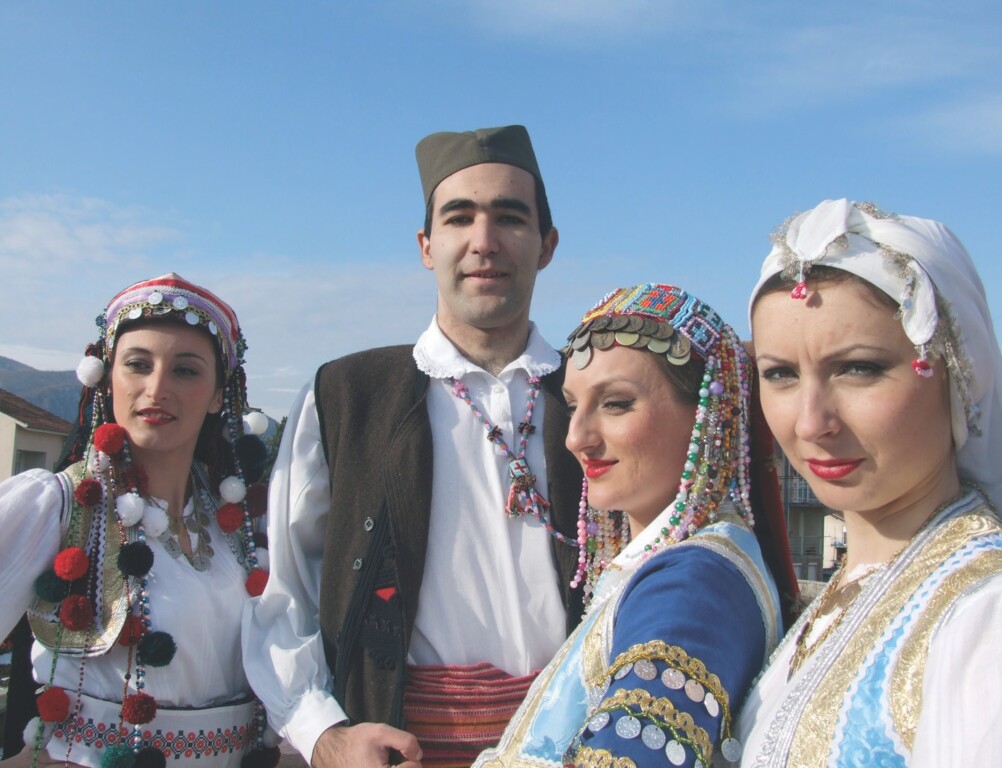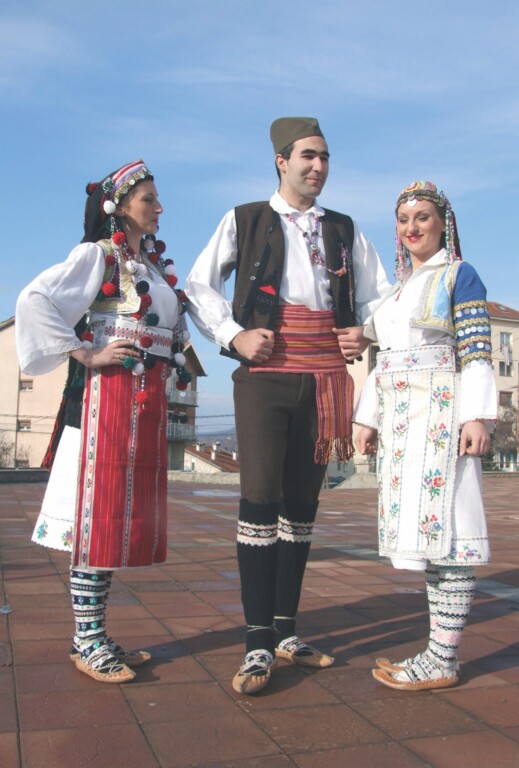Serbian clothing pattern in Gnjilane District,
late 19th and first half of the 20th century

Women's Costume
The shirt was long and straight-cut, with embroidered patterns on the collar and chest. Two types of aprons and a woolen belt were worn around it. The front apron, called "bošča," was woven from wool or cotton, darker colors for older women and lighter colors for younger ones, with simple patterns.
The aprons intended for festive occasions were richer in patterns and had more colorful decorations, using silk and lace in which sequins were sewn.
The back apron, "rep," woven from dark wool threads, was adorned along both its upper and lower edges with long fringes made of finely spun and twisted black threads.
Both young girls and women wore the "rep."
The vest was made of sheepskin by tailors.

Girls, brides, and young women wore a sheepskin vest, while older women wore a vest with hooks.
As for jewelry, women favored "pafta," belt buckles, as well as bracelets and necklaces made from various colored glass beads.

Men’s Costume

The chest ornament, "ćustek," seen in the picture, is made according to an authentic sample borrowed from Tom Stojić, a great cultural enthusiast. For years, he demonstrated the dances and songs of this region in Koretište in the best way possible. Unfortunately, after the war in 1999, he had to move to Niš, where I visited him in 2005 and received the "ćustek" for reconstruction.
Despite the great joy of seeing him, that day with Uncle Tom was perhaps the hardest day in the field. His sorrow and deep sadness for the homeland and the house he had left behind could not be concealed. Even in such moments, he had in mind the old Morava customs, according to which the host was obliged to serve the guest a meal, which he, as a bachelor, had prepared.


